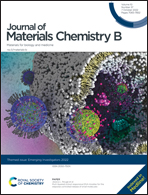Hemostatic biomaterials to halt non-compressible hemorrhage
Abstract
Non-compressible hemorrhage is an unmet clinical challenge, which occurs in inaccessible sites in the body where compression cannot be applied to stop bleeding. Current treatments reliant on blood transfusion are limited in efficacy and complicated by blood supply (short shelf-life and high cost), immunogenicity and contamination risks. Alternative strategies based on hemostatic biomaterials exert biochemical and/or mechanical cues to halt hemorrhage. The biochemical hemostats are built upon native coagulation cascades, while the mechanical hemostats use mechanical efforts to stop bleeding. This review covers the design principles and applications of such hemostatic biomaterials, following an overview of coagulation mechanisms and clot mechanics. We present how biochemical strategies modulate coagulation and fibrinolysis, and also mechanical mechanisms such as absorption, agglutination, and adhesion to achieve hemostasis. We also outline the challenges and immediate opportunities to provide comprehensive guidelines for the rational design of hemostatic biomaterials.

- This article is part of the themed collection: Journal of Materials Chemistry B Emerging Investigators


 Please wait while we load your content...
Please wait while we load your content...